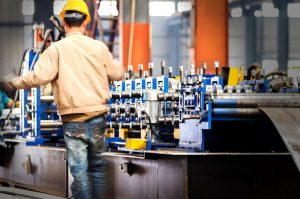China’s steel industry facing increasing environmental constraints
Many areas, industries (including the China steel sector) and, indeed, societies are under threat from pollution.
In many emerging markets, economic growth has come at the stark price of appalling levels of pollution.
But the Financial Times suggested that in China, home of the largest steel and aluminum industries in the world by far, steel output is under threat from Beijing’s “war on pollution.”
Grab your coffee and hear MetalMiner’s latest forecast for aluminum, copper, stainless and carbon steel on Wednesday, March 24, at 10 a.m. CDT https://zoom.us/webinar/register/WN_6J8wAyYySfihVk3ZUH9yMA.
China steel and the ‘war on pollution’
During the winter season in recent years, power production that runs on coal and polluting industries such as steel and cement, many of which are not only large emitters themselves but also draw electricity from polluting sources of power generation, have been closed in phased programs to reduce air pollution.
But this is much more than those short-term remedies to peak smog levels.
The Financial Times suggests Beijing’s new Five Year Plan focuses on pollution. The plan will require legislation that will result in an unavoidable decline in steel output.
Apparently, local governments have already begun to impose curbs.
Seven blast furnaces are under pressure to shut by next week in the city of Tangshan. The news raises fears that reduced output will result in higher steel prices. In turn, it will increasingly drive Chinese producers further up the value chain.
As a result, they would venture into technically more sophisticated product areas to which Western producers had retreated in the face of relentless competition from China at the commodity end of the market.
A boon for Chinese mills
The China steel sector’s success in these moves and prospects for higher prices have already led to Chinese steel mills’ share prices rising.
Those larger mills will likely to be able to respond to tightening environmental controls and will ultimately be benefactors from this process.
That will happen as they find ways to reduce their carbon footprint. Some might invest in more scrap-based, electric arc furnace (EAF) steel production associated with renewable energy power sources. Mills could also switch blast furnaces to direct reduced iron (DRI) and possibly even hydrogen-based heating (rather than carbon-intensive coke).
In the short term, buoyed by better margins, the China steel sector will likely cope by using higher 67% purity iron ore.
This would further extend a trend that has been developing for some years. In short, low-grade iron ore continues to trade at a widening discount to the highest grades.
Volatility is the name of the game. Do you have a steel buying strategy that can handle the ups and downs?



Leave a Reply